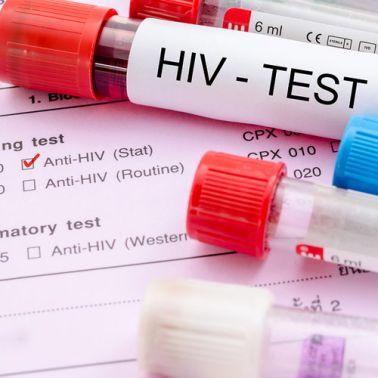Planned Parenthood facts you may not have known
15 Things You Should Know About Planned Parenthood - Page 5
Share the post
Share this link via
Or copy link

Gettyimages.com/Portrait of confident black doctor
Planned Parenthood—those are two words that have always made the hair on the back of one’s neck rise a little bit. For many women, Planned Parenthood played a major role in some of the most difficult, formative moments of their lives. I, personally, went there as a teen several times—once when I wanted to go on the pill but didn’t want my parents to know I was having sex, a second time when I feared I had contracted something from oral sex, and a third time just to keep a friend company who was getting a pregnancy test. It’s a place that has helped many women through times that nobody else would help them through, and yet, there can’t seem to be a general, nation-wide consensus that it is, essentially, good. Since the organization is receiving a lot of media attention right now—negative and positive—let’s look at some facts you probably didn’t know about Planned Parenthood.

Image Source: Shutterstock
They go where other doctors won’t
Planned Parenthood focuses on setting up clinics in areas that are medically underserved. They provide essential services to residents of neighborhoods who would otherwise need to travel far to get them.

Image Source: Shutterstock
They cater to those who work a lot
Planned Parenthood is open weekends, open late, and offers same-day appointments. They know that the majority of their clients work long days, odd hours, and struggle to make appointments at other medical centers.

They treat a lot of men
Love MadameNoire? Get more! Join the MadameNoire Newsletter
We care about your data. See our privacy policy.
While many believe that Planned Parenthood is just for women, thousands of men visit the clinic each year for services like prostate screenings and testicular cancer screenings.
Corbis
It’s not all teens
Don’t believe the rumors that Planned Parenthood just serves horny teenagers and irresponsible adolescents. The truth is that 85 percent of their patients are 20 years old and older—grown adults.

Shutterstock
Twenty percent of American women have gone
An estimated one in five women in America has visited Planned Parenthood at some point in their lives. Like I said—it’s been a part of formative moments for many of us.

Shutterstock
Their focus is preventing unintended pregnancies
While the argument to defund Planned Parenthood comes from pro-lifers protesting the fact that they offer abortions, you should know that 80 percent of patients go to Planned Parenthood for services aimed at preventing pregnancy.

Credit: Bigstock
STI testing is the second largest service
The second most popular type of service at Planned Parenthood is STI and STD screenings.

Shutterstock.com
They perform vasectomies
Just how much does Planned Parenthood also serve men? Well, they perform thousands of vasectomies each year.

Shutterstock
They don’t just serve the US
Planned Parenthood also has locations in Latin America and Africa, and outreach programs working on educating people on safe sex and sexual health around the world.

Shutterstock
They have extensive educational outreach
Planned Parenthood has services through which individuals can text message a representative to get quick answers to their questions regarding safe sex, sexually transmitted diseases, pregnancy prevention and more.

Image Source: Shutterstock
They also offer screenings
Planned Parenthood offers cervical cancer screenings, mammograms, and pap smears. In fact, they provide nearly one million cancer screenings and pap smears a year.

Image Source: Shutterstock
Most patients live below poverty level
If you think Planned Parenthood’s patients would be able to receive health care should the clinics be shut down, think again. Around 75 percent of their patients live below poverty level.

Image Source: Shutterstock
Defunding it can be bad news for taxpayers
Unwanted pregnancies will lead to perhaps a $650 million increase over the next decade in Medicaid spending.

Image Source: Shutterstock
They offer hormone therapy
Select Planned Parenthood locations have begun to offer transgender individuals hormone therapy. Most require a therapist’s letter first and all require signed consent forms.

Image Source: Shutterstock
They can’t survive on private funding
Over 40 percent of their funding comes from federal and state funds so, no, they probably will not survive if they are de-funded.
-

My Husband And I Attempted To Have A Creative Date Night At Home -Without A Babysitter - Here's How It Went
-

Vontélle Eyewear Founders Score History-Making Licensing Deal With Paramount
-

She Tried It: Ivy Park Drip 2 and 2.2 Black Pack
-

Our Health, Our Power: Debunking Myths And Taking Charge This Open Enrollment



